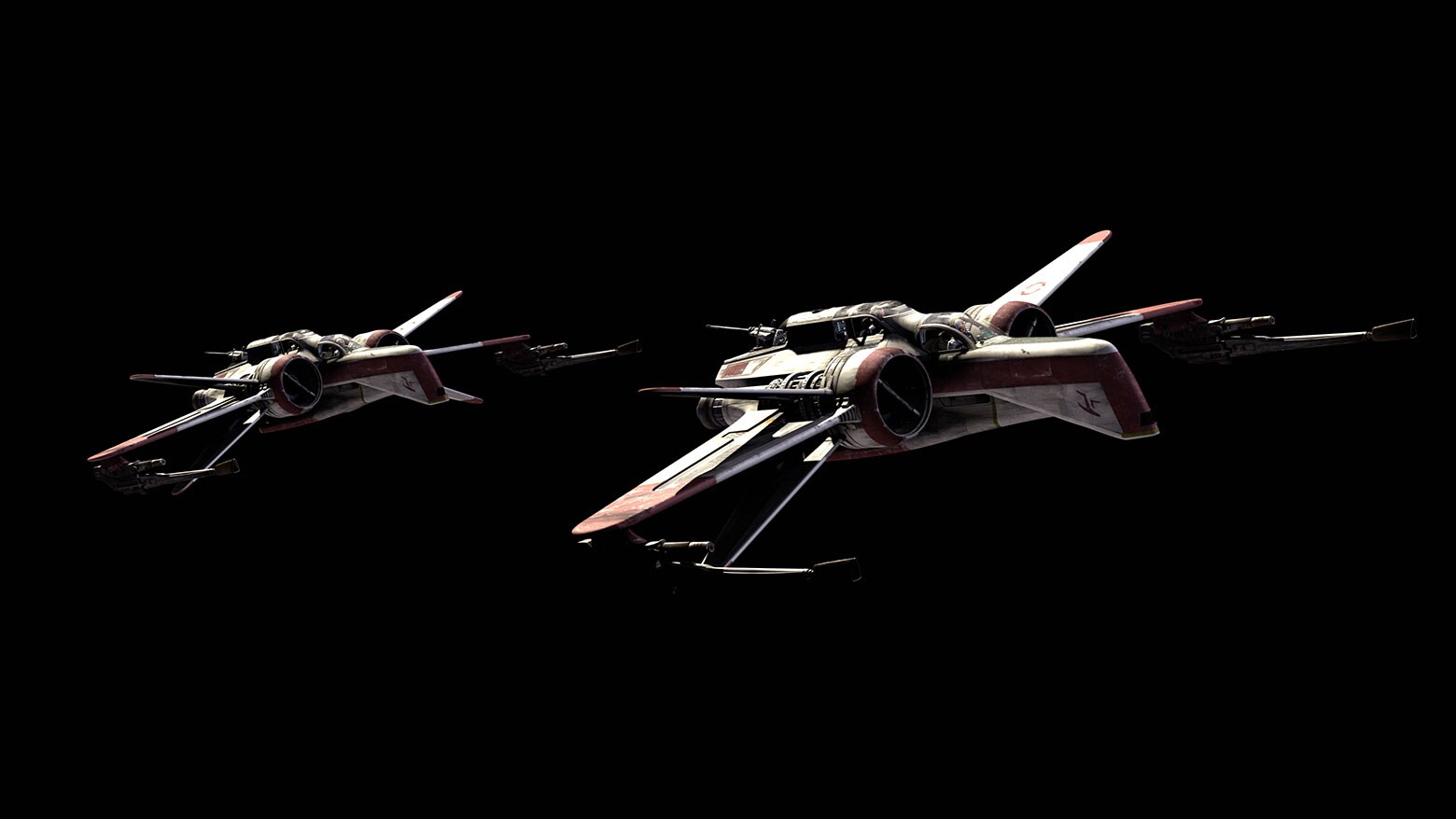

Typically they carried a single deflector shield generator, which could be adjusted to protect specific parts of the starfighter. Many starfighters were equipped with deflector shields to protect them from enemy fire, radiation, and micrometeor impacts. Starfighters could also cause tremendous devastation when working in groups: a squadron of Y-wing bombers were capable of carrying enough ordnance to glass an entire city, bathing the battlefield in blinding white detonations which scrambled enemy sensors. However some starfighters like the A/SF-01 B-wing starfighter carried sufficient armaments that they could destroy capital ships on their own. Often these were effective against other starfighters and similar targets, but didn't have the firepower to punch through the defenses of a capital ship as during the Battle of Naboo. The primary weapon for most starfighters were laser cannons, but these could be supplemented with additional weaponry such as proton torpedo launchers to provide additional firepower. Certain classes of transports, shuttles, and light freighters, although more commonly used to move cargo and passengers around, could also pack considerable armament and maintain a degree of maneuverability. Certain classes of starfighters could be modified to trainers while still retaining combat capability. Their heavy armament often granted them considerable air-to-air or space-to-space combat capabilities, despite being optimized for air-to-ground combat. Gunships were heavily-armed vehicles designed to deploy ground forces in landing zones created by their heavy weaponry. Interceptors represented a range of starfighters that usually emphasized speed and agility over versatility and firepower, sometimes at the expense of ordnance payloads, life support, or hyperdrive capabilities. Bombers were starships designed to carry heavy ordnance payloads, often at the expense of maneuverability and straight-line speed.

Starfighters often had some degree of overlap with other ship classes, as well as a few distinct sub-classes. Y-wings were considered both bombers and fighters. 3.2 Invasion of Naboo and Separatist Crisis.Additionally, there are a number of clones who were left out of the initial list who absolutely deserve to be included- characters which fans will be happy to see here. These highly-specialized clones were some of the most skilled ever seen and need to be included in any discussion of skilled clone troopers. It also introduced a new group of clone troopers, Squad-99, also known as the Bad Batch. Around the time this article was initially published, a new season of Star Wars: The Clone Wars was released which finally helped to finish some of the lingering plot threads. Updated February 21st, 2021 by Theo Kogod. At the end of their journeys, a select few of these elite clone troopers grew into legends through their accomplishments and stunning range of abilities.

While all of them had the same origin, many of them went down different and unique paths. RELATED: Star Wars: 10 Best Story Arcs In Clone Wars The Clone Wars were among the most epic and game-changing conflicts in the history of Star Wars and so it is only natural that they produced some of the galaxy's best warriors. The Grand Army of the Republic, composed of clones of the bounty hunter Jango Fett is, at first glance, made up of identical soldiers.


 0 kommentar(er)
0 kommentar(er)
